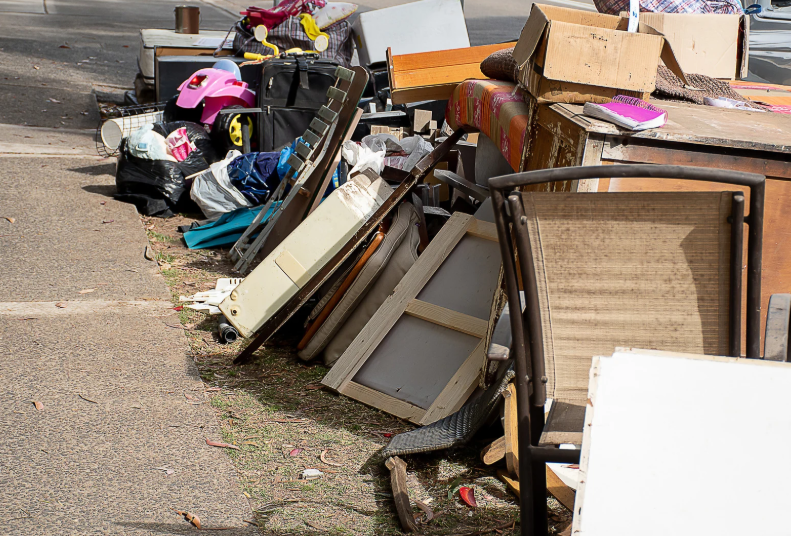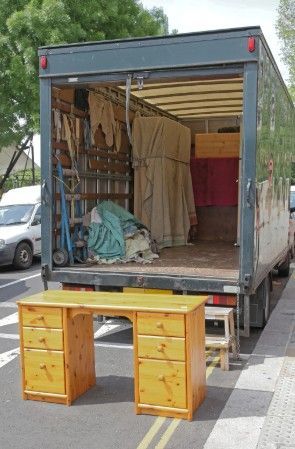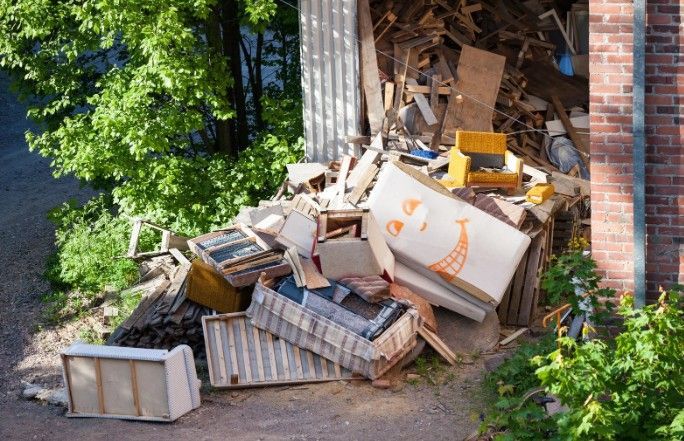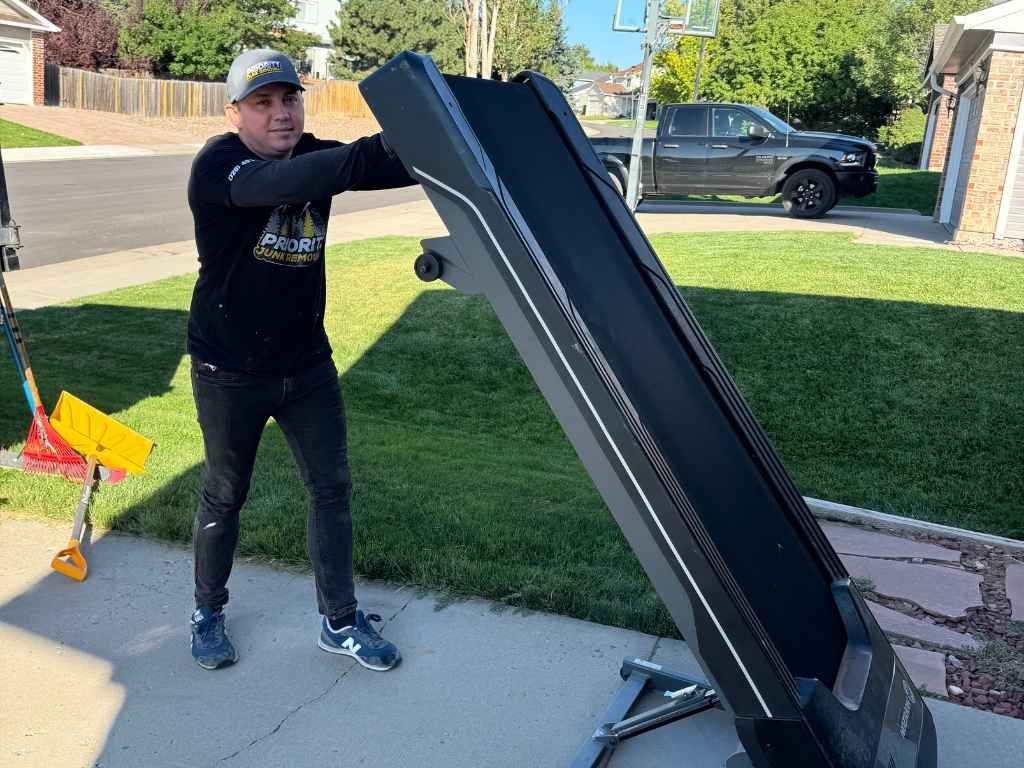How to Handle Bulky Items During Your Junk Removal
Junk removal is one of those tasks that can seem deceptively simple at first glance. You gather up old furniture, broken appliances, or clutter from your garage, and voilà, it's gone. But when those items are bulky and unwieldy, the process quickly turns into something much more complex. Whether it's a refrigerator that's seen better days, an old mattress that refuses to fit through your narrow doorway, or a sofa that just won’t budge, handling bulky items can leave you scratching your head.
In this article, we will explore the essential steps to take when you're faced with bulky items during your junk removal process. We’ll go beyond just the basics and dive into techniques, tips, and tricks to ensure a smooth and efficient process. Let's get into it.
Bulky Items and Their Challenges
Bulky items, by definition, are large, heavy objects that pose a challenge when it comes to moving and disposal. These include furniture like couches and beds, large appliances such as refrigerators and washers, and even exercise equipment like treadmills. Their size and weight make them difficult to maneuver, increasing the risk of property damage or personal injury if not handled properly. For example, trying to carry a heavy mattress down a narrow staircase can lead to strained muscles or damaged walls if you’re not careful.
Additionally, many bulky items require special disposal methods. Old electronics may contain hazardous materials like lead and mercury, while appliances like refrigerators often need to be drained of harmful chemicals before disposal. Without proper handling, you could end up damaging your home, hurting yourself, or violating local waste disposal regulations. This makes planning and careful execution essential when dealing with bulky items.
Assess the Item's Size and Condition

Before you attempt to move a bulky item, the first step is to assess its size and condition. Start by measuring the item’s dimensions to ensure it will fit through doorways, hallways, and staircases. You’d be surprised how often people discover too late that their oversized couch won’t make it around a corner! Also, check the item’s condition. If it’s damaged or unstable, it could present a safety hazard during removal.
For instance, a broken glass coffee table could shatter if not carefully handled, leading to injuries and a mess to clean up. On the other hand, some pieces of furniture or appliances can be partially disassembled, making them easier to handle. Removing the legs from a dining table or detaching the doors from a refrigerator can make a huge difference when trying to maneuver them through tight spaces.
Plan Your Route and Gather Tools
Once you’ve evaluated the item’s size and condition, it’s time to map out your exit strategy. Measure your doorways, hallways, and staircases to confirm that the item will fit through these spaces without getting stuck. Take note of any sharp corners or obstacles that might require adjustments to your approach. Next, gather the right tools to make the job easier. Furniture sliders are great for moving heavy pieces across hardwood or carpet without damaging the floors.
Dollies and hand trucks allow you to roll heavy items rather than lift them, saving your back from unnecessary strain. Straps can help distribute weight evenly when lifting, while moving blankets protect both the item and your home from scrapes and scratches. Having the right tools on hand means you won’t have to scramble mid-task, which reduces stress and increases efficiency. A little preparation goes a long way when dealing with bulky items.
Get the Right Help
Bulky items are, well, bulky — and trying to handle them solo is a recipe for trouble. Even if you’re confident in your strength, some items are just too heavy or awkward to lift alone. That’s why it’s important to enlist help. Ask a friend or family member to lend a hand, or better yet, consider hiring professional junk removal services. If you go the DIY route, remember to lift with your legs, not your back — bending at the knees rather than the waist reduces the risk of strain or injury.
Keep the load close to your body and maintain a firm grip to avoid losing control. Also, take regular breaks to avoid exhaustion — moving heavy items is physically demanding work. Professionals, however, have the experience, strength, and tools needed to move large objects safely and efficiently, saving you the trouble (and potential back pain).
Disassemble When Possible
When it comes to moving large, heavy items, disassembling them first can save you a lot of effort and frustration. Many bulky pieces of furniture, appliances, and exercise equipment are designed to be taken apart, making them easier to handle and transport. Breaking down these items not only lightens the load but also helps prevent damage to your walls, floors, and the item itself during the move. Taking the time to disassemble can make the difference between a smooth move and a stressful one.
- Easier to Lift and Carry – When you break down a heavy item into smaller pieces, it becomes much easier to lift and maneuver. Carrying a full couch or treadmill through a narrow hallway is a recipe for frustration and potential injury.
- Prevents Damage – Large, bulky items can easily scrape walls, chip paint, or dent doorways when being moved in one piece. Disassembling allows you to carry each piece more carefully and navigate tight corners without the risk of causing damage. It also helps protect the item itself from getting scratched, bent, or otherwise damaged during the move.
- Saves Space in the Moving Truck – A fully assembled bed frame or dining table can take up a huge amount of space in a moving truck. However, when you break them down into individual parts, you can stack and arrange them more efficiently, leaving more room for other items.
- Protected Fragile Parts – Items like glass shelves, decorative legs, or delicate electronic components are particularly vulnerable during a move. Disassembling and wrapping these fragile pieces separately reduces the risk of them breaking or getting scratched.
- Simplifies Reassembly – Keeping track of screws, bolts, and other small parts makes putting your items back together quick and easy. Use small plastic bags to store these parts and label them clearly so you know which piece belongs to which item.
Know How to Handle Special Materials
Certain bulky items require special care when handling and disposing of them. Electronics like TVs and computers often contain hazardous materials such as lead, mercury, and cadmium. Improper disposal can harm the environment and may even violate local regulations. Check with local e-waste recycling centers to find the proper drop-off locations. Appliances like refrigerators and air conditioners contain refrigerants that need to be safely removed before disposal.
Mattresses and box springs can be tricky as well since many landfills won’t accept them. Luckily, mattress recycling centers exist to handle these items responsibly. Construction debris, such as wood and metal, can often be recycled or repurposed at local waste facilities. Knowing how to handle each type of bulky item ensures you’re following local guidelines while minimizing environmental impact. Proper disposal protects both your community and the planet.
Disposal and Recycling
Once you’ve removed the bulky item, the next challenge is getting rid of it responsibly. Most municipal trash services won’t accept large items, so you’ll need to explore other options. Recycling is ideal when possible — metal appliances, furniture, and construction materials can often be melted down or repurposed. Donation centers are a great alternative if the item is still in good condition. Many thrift stores and local charities will accept large furniture or appliances, as long as they’re functional.
If recycling or donating isn’t an option, you may need to take the item to a landfill. However, this should be a last resort since it’s the least environmentally friendly solution. Professional junk removal services simplify the process by handling the disposal for you, ensuring that recyclable and reusable materials are processed responsibly.
Hire a Junk Removal Service
If the thought of handling a bulky item yourself feels overwhelming, a professional junk removal service is your best bet. Companies like Priority Junk Removal specialize in moving large, heavy items quickly and safely. They have the tools, equipment, and expertise to navigate tight spaces and heavy loads without causing damage. When you hire a junk removal service, the process is straightforward — they’ll arrive at your home, assess the items, and handle all the heavy lifting.
Whether it’s a broken refrigerator, an old mattress, or a massive sectional sofa, they know how to remove it efficiently and responsibly. Most junk removal companies also have relationships with recycling centers and donation organizations, ensuring that your items are disposed of in the most eco-friendly way possible. This makes junk removal not only convenient but also environmentally conscious.
Conclusion
Bulky item removal doesn’t have to be a stressful ordeal. With proper planning, the right tools, and a little help, you can tackle even the heaviest objects without damaging your home or straining your back. However, if the job feels too big to handle, Priority Junk Removal has got you covered. We specialize in fast, efficient, and eco-friendly junk removal in Littleton, Colorado.
Whether you’re getting rid of a broken appliance, a worn-out sofa, or construction debris, we’ll make the process easy and stress-free. Don’t struggle with heavy lifting — let the pros handle it! For more information or to schedule a pick-up, give us a call at 720-451-1359 or email us at priorityjunkremoval@gmail.com. We’re here to help you reclaim your space with ease!











